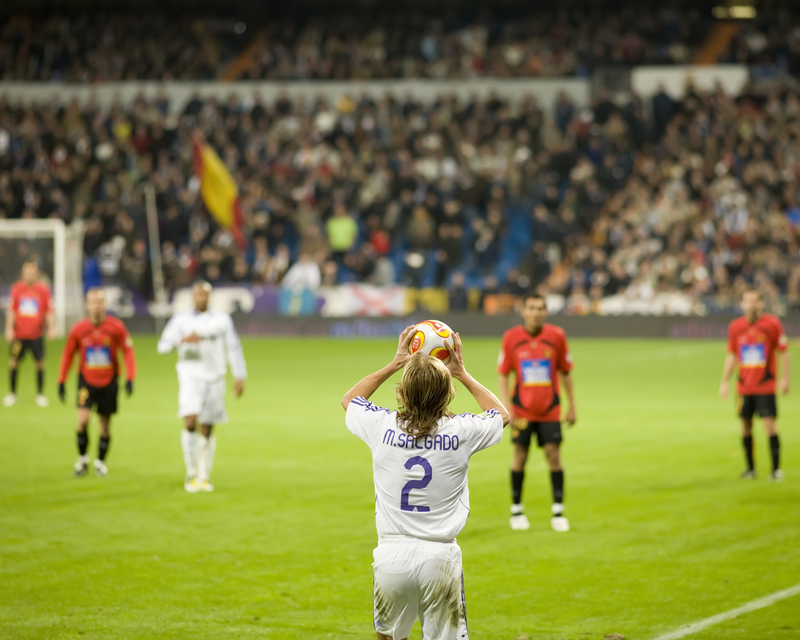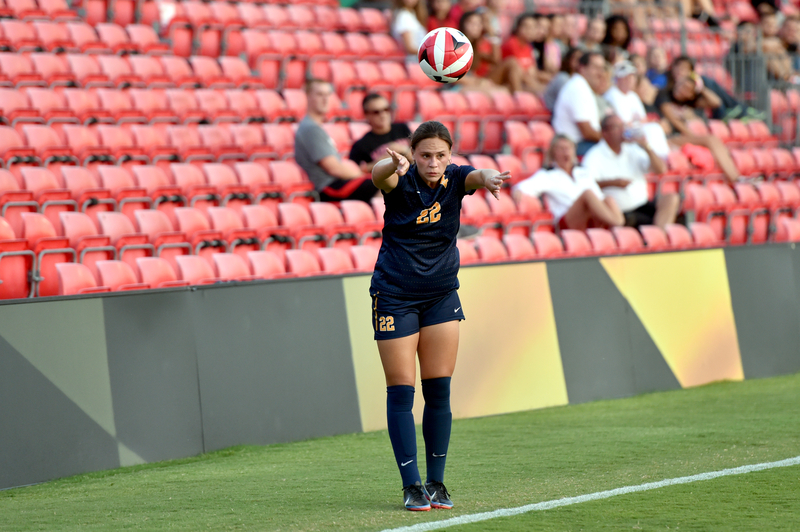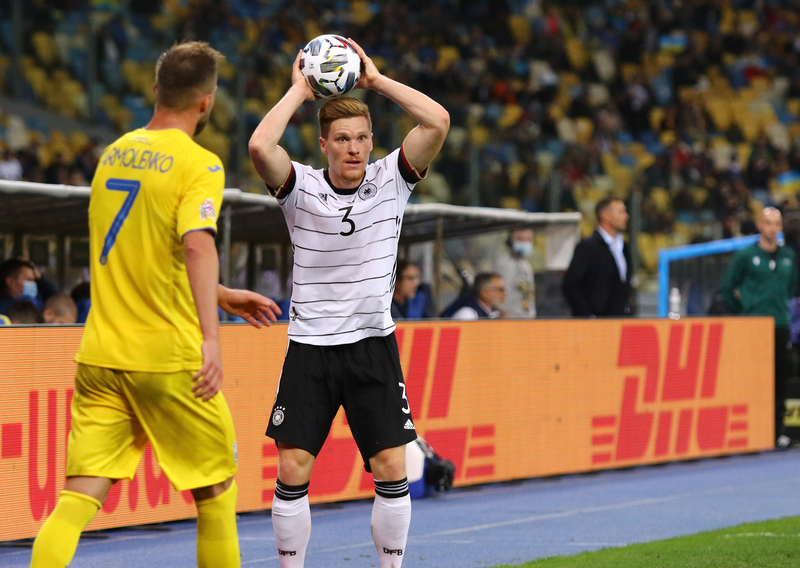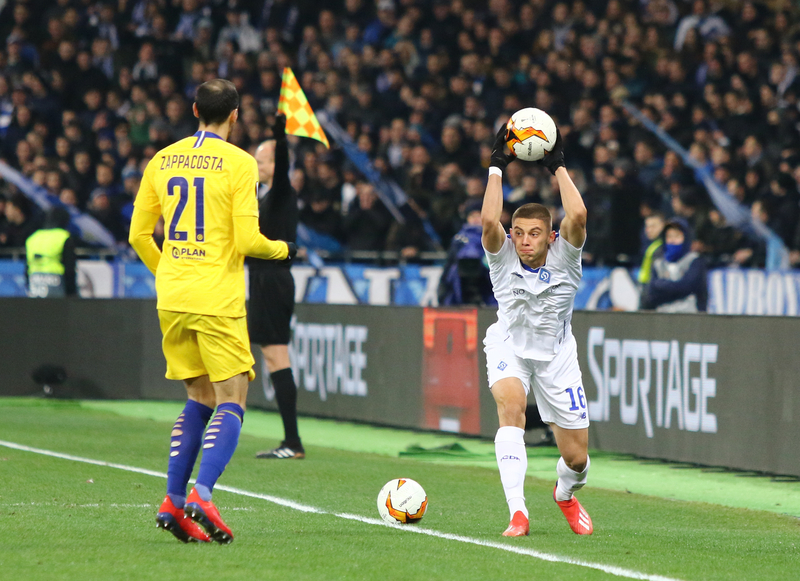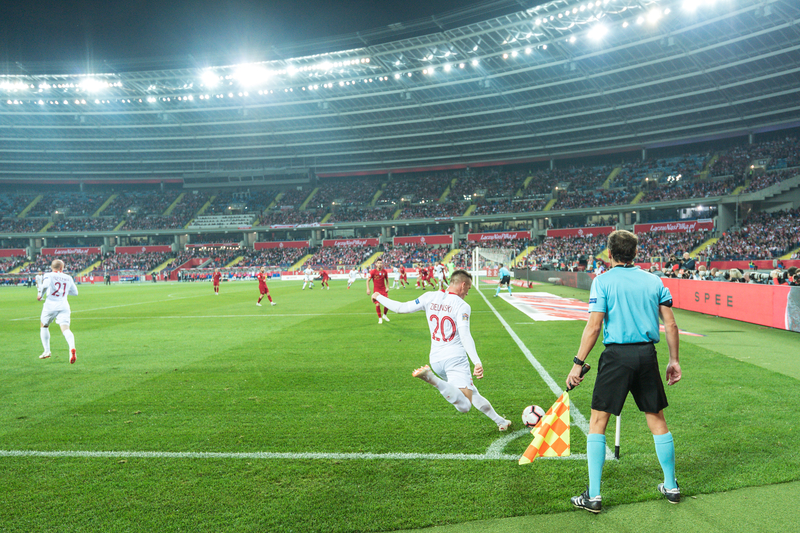Last updated on February 23rd, 2023 at 12:08 pm
In soccer (association football), the throw-in is critical for every match. The throw-in puts the ball back into the field of play, with one thrower tossing the ball to their teammate to resume the action. The player who made the last touch before the whole ball went out of bounds is now on defense, and the opposing team gets to toss the ball back into the pitch to start on offense.
So, why do throw-ins occur during soccer games? What are the throwers’ rules, and how far back should the opposing team play to defend against the toss? Why are there corner kicks when the ball goes out of bounds sometimes, and there are regular throw-ins at other moments? How often do throw-ins occur during matches?
Here is the complete guide to soccer throw-ins and more!
What Law is the Throw-In?
The Laws of the Game dedicates rule 15 specifically to the throw-in. The Laws of the Game gives the ball back to the opposing team when their opponent is the last to touch the ball. The soccer ball must completely pass the touchline on the ground or air to be out of bounds. The referee determines the determination of who touched the ball last.
How to Throw the Soccer Ball Back into the Pitch?
There can only be one thrower throwing the ball from behind their hand back into the pitch to resume the game’s action. The thrower must use both hands to throw the ball to a teammate and must be facing the field of play from where the ball last went out of bounds. In addition to that, their feet must be on the touchline or behind it as they throw.
The opposing team gets a direct free kick if the thrower commits a handball on the toss. A penalty kick occurs for the opposing team if the handball occurs in the thrower’s team’s penalty area.
Do Soccer Rules Allow a Player to Run-Up to Throw?
Soccer rules allow players to perform a run-up to throw the ball to their team. Soccer coaches and players practice this technique constantly, especially when working on long throw attempts. Just like a regular standing throw, the run-up must have the player have both feet on the touchline (or behind it) when they throw the ball with both hands behind their head to a teammate.
One benefit of performing the run-up is that there are no offsides from where your teammate receives the ball. If you can time the run-up correctly with a long pass to a teammate, it can set your offense up near the opponent’s goal to continue on offense. Performing a run-up throw is also a good idea to get the ball further away from your goal.
Can the Soccer Thrower Score a Goal Directly from a Throw?
A soccer throw-in works as an indirect free kick, which means the thrower can’t score a goal directly from their throw. Also, like an indirect free kick, the thrower can’t touch the ball again after they throw it in until another player touches it. That means the thrower can’t toss the ball in front of their feet to resume the action. Instead, they must throw it towards a teammate or give the play-up as an indirect kick to the opposing team.
If the thrower throws the ball for some reason and goes into the goal without any other touching it, then it turns into a goal kick for the other team. A corner kick occurs if the throw goes into the thrower’s own goal net.
Can Your Goalie Catch the Throw-In Pass?
If a player throws the soccer ball to their goalie via a throw-in, the goalie can’t pick it up. Instead, the goalkeeper must play the pass with their head, chest, or feet.
How Do the Defense and Offense Play a Soccer Throw-In?
The soccer player on the defending team guarding against the flip throw must be at least 2 yards away from where the throw-in occurs. However, even if the player is taking a running throw with the ball, the opposing player must play two yards back from the touchline where the soccer ball went out of bounds. If the opposing player tries to play closer than that, they can get a yellow card for unsporting behavior.
The players on offense waiting for the ball should try and get open to encourage a pass from the thrower. Soccer players should spread out on offense near the sideline where the throw-in occurs. Spreading the offense gives the thrower a better chance of making a successful toss to a teammate to continue on offense.
Soccer Throw In vs. Corner Kick Explanation
A throw-in occurs when the ball completely crosses the sideline on the pitch in soccer. Whoever was last to touch the ball has the opposing player get the ball to throw it to their teammate to resume play.
Corner kicks (Law 17) occur when the soccer ball goes out of bound after the ball crosses the goal line. Like with a regular throw-in, the ball can go out of bounds either in the air or by ground. The main difference on a corner kick is that it becomes a direct free-kick and is taken by a soccer player’s foot, not by their hands.
Outside of where the resume of action occurs and how the soccer players perform that activity, the primary difference is that a player can directly score on a corner kick while a throw-in can’t. That means that the defense, when playing a corner kick, must be ready to defend against a direct shot towards their goal, while a throw-in only needs to guard an offensive player.
How Often Do Throw-Ins Occur in Soccer Games?
According to American Soccer Analysis, throw-ins make up about 5% of the total passes per match in MLS from 2015to 2018. During a Major League Soccer game, a throw-in occurs about 44 times per match.
Conclusion: What is a Soccer Throw-In?
In summary, a soccer throw-in resumes the game’s action when the ball goes out of bounds. The throw-in is a quick action, which association football prefers by having as little stoppage time during games as possible. A throw-in must occur with the thrower taking the ball and tossing it with both hands over their hand, and they can’t score directly from that throw.
The next time you watch a friendly match or the FIFA World Cup, notice how many times the ball goes out of bounds. You will be amazed at how frequently this occurs and how quickly the players get the ball back to toss it to their teammates to resume action!
Similar Posts:
How Long is an Association Football Game?
How Many Players are on a Soccer Team?
Greg Kristan, owner of The Stadium Reviews, LLC and TM Blast, LLC, brings his extensive experience visiting over half of the MLB ballparks, along with numerous MLS, NHL, NBA, and NFL venues, to provide in-depth coverage on the bag policy, food options, and parking. He has also been interviewed about his experiences on several sports podcasts.


